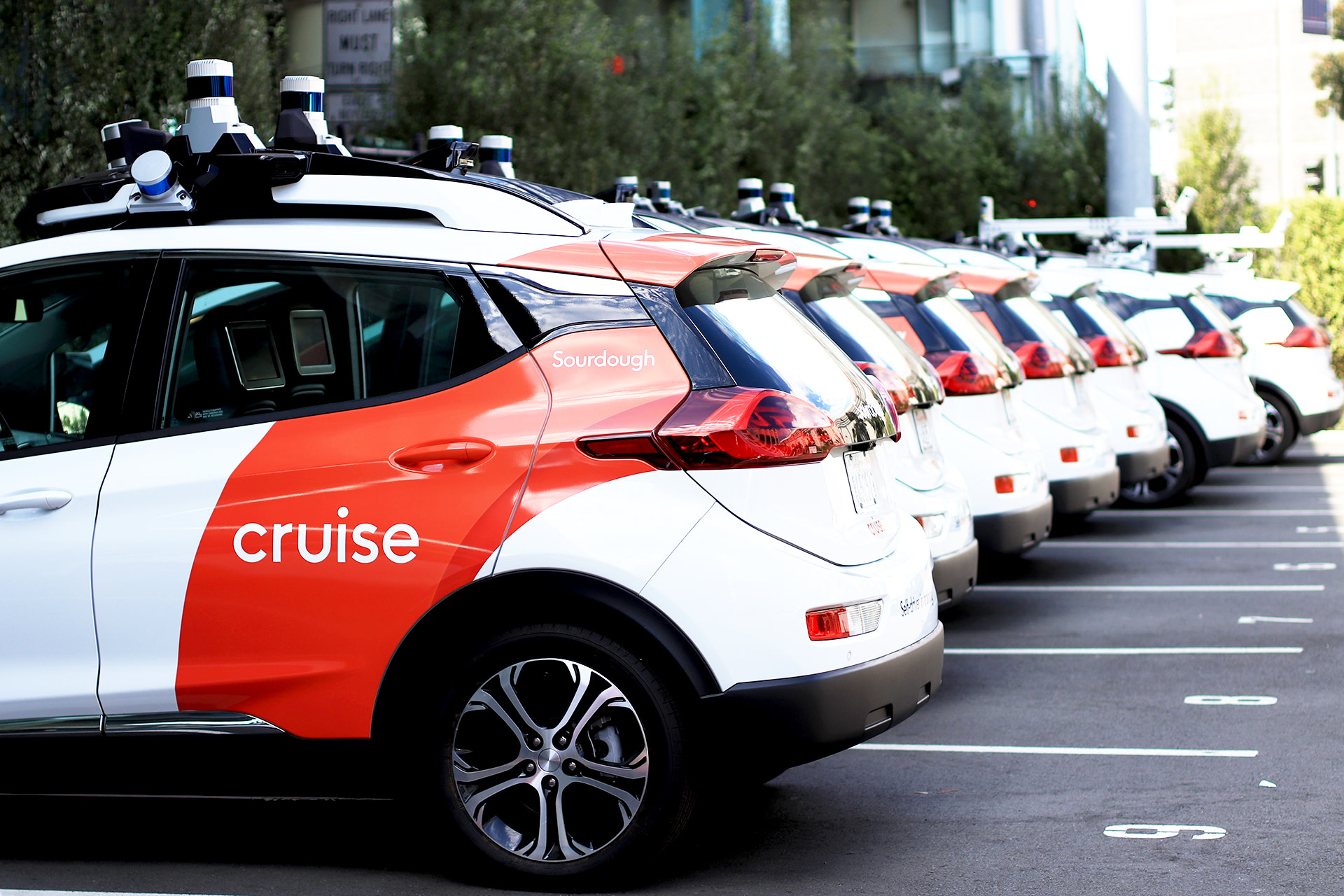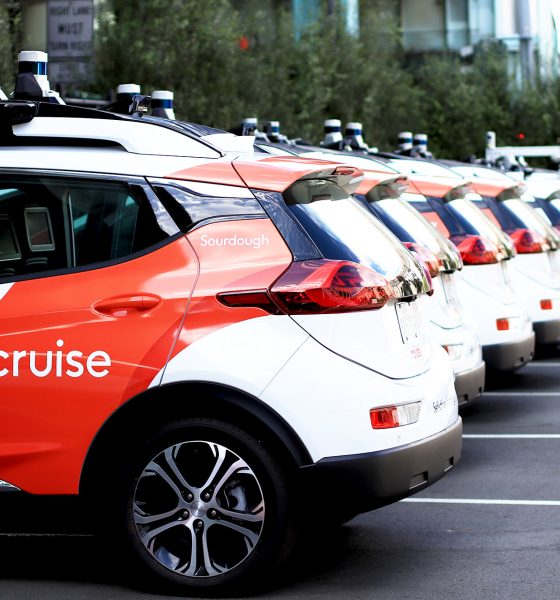A California judge has forced General Motors’ (GM) self-driving unit Cruise to increase its settlement offer to the maximum amount, after one of the company’s robotaxis pinned and seriously injured a pedestrian in October.
On October 2, a driverless Cruise vehicle dragged and pinned a pedestrian in San Francisco, and the company’s license to operate self-driving cars was immediately revoked by the California Department of Motor Vehicles (DMV). The DMV later said that Cruise “misrepresented” and “omitted” crucial details about its response to the accident, and the California Public Utilities Commission (CPUC) in December ordered the company to appear before a judge this month.
During the hearing, which was held on Tuesday, California Administrative Law Judge (ALJ) Robert Mason III suggested that Cruise revise its $75,000 settlement offer to the maximum penalty of $112,500, after calling the company’s proposed amount “low,” and even suggesting the company was seeking a “discount.”
While Judge Mason III said he appreciated Cruise attempting to take “corrective action” in its crash response procedures, he added that the company should “take a hint” following his multiple questions about the offer amount, suggesting directly that Cruise change its settlement offer to the full penalty.
“Point taken, your Honor,” responded Craig Glidden, Cruise President and Chief Administrative Officer. “We immediately revise our offer to the amount requested.”
Waymo could face new legal barriers in its expansion to Los Angeles
The hearing discussed findings from an investigation conducted by the law firm Quinn Emanuel, which Cruise hired, including that internet connectivity hampered the company’s sharing of video footage from the accident with regulators in meetings that followed.
In response to the motion for approval to settle at $75,000, the commission can adopt, adopt with revisions, or reject Cruise’s filing. Following the hearing, the next step is for Judge Mason to write a proposed decision on the case for the commissioner’s consideration, with the general timeframe falling within about 60 days, as a CPUC spokesperson clarified to Teslarati.
Cruise said it was eager to resolve the case and move past the incident, adding that it wanted to continue to “advance the mission of bringing driverless cars that are safer to the public and also greater accessibility to the public to the market.”
However, Mason didn’t make it sound like the commission was eager to set the case aside:
“While the commission does fall on the side of getting its cases resolved, I don’t know that this is one of those protracted pieces of litigation that we’re usually most anxious to put aside and then move forward with the regulatory process,” Mason added.
In the original motion, filed on January 30, Cruise outlines the key requirements it would have to follow as part of the settlement:
1. Cruise will adopt voluntarily several new data reporting enhancements that will provide additional data to the Commission concerning California collisions and AVs operating in California under a deployment permit that enter a minimal risk condition (“MRC”) state and result in conditions described in Attachment A;
2. Cruise will provide the Commission with Cruise’s responses to the permit reinstatement questions from the California Department of Motor Vehicles (“DMV”) at the same time Cruise provides those responses to the DMV;
3. Cruise will make a payment of $75,000 to the State General Fund within ten (10) days of the Commission’s approval of the Settlement Agreement without modification; and
4. Upon the Commission’s approval of the Settlement Agreement, the OSC proceeding will be closed.
“We are committed to working in partnership with the CPUC, other regulators and government agencies to improve transportation safety in support of a shared goal –– providing better, safer and more accessible transportation to the public in our communities,” a Cruise spokesperson wrote in an email to Teslarati. “Over the past several months, we have taken important steps to improve our leadership, processes and culture, and we are committed to resolving matters to the Commission’s satisfaction as we work to restore regulatory and public trust.”
Cruise also noted that the accident, which occurred after the pedestrian had already been hit by a human driver, was partially caused by the driverless ride-hailing vehicle falsely identifying the situation as a side-impact collision rather than a frontal collision, causing the Minimal Risk Condition (MRC) response that forces the vehicle to pull over.
In addition, Cruise said it is currently expecting a new Chief Safety Officer in the “not too distant future,” after two co-founders resigned immediately following the accident, and after the company fired nine executives and laid off nearly a quarter of its staff on the same day in December.
GM recently announced plans to cut spending on Cruise in half this year, though it said it also hoped to “refocus and relaunch” the company’s operations. GM CEO Mary Barra highlighted significant changes at Cruise, which the company began implementing following the Quinn Emanuel investigation.
“At Cruise, we are committed to earning back the trust of regulators and the public through our commitments and our actions,” Barra said following GM’s 2023 earnings call.
You can see the full January 30 filing from Cruise below, including the findings from the Quinn Emanuel investigation, which Cruise made public last month.
What are your thoughts? Let me know at zach@teslarati.com, find me on X at @zacharyvisconti, or send your tips to us at tips@teslarati.com.

News
Elon Musk’s Grokipedia surges to 5.6M articles, almost 79% of English Wikipedia
The explosive growth marks a major milestone for the AI-powered online encyclopedia, which was launched by Elon Musk’s xAI just months ago.

Elon Musk’s Grokipedia has grown to an impressive 5,615,201 articles as of today, closing in on 79% of the English Wikipedia’s current total of 7,119,376 articles.
The explosive growth marks a major milestone for the AI-powered online encyclopedia, which was launched by Elon Musk’s xAI just months ago. Needless to say, it would only be a matter of time before Grokipedia exceeds English Wikipedia in sheer volume.
Grokipedia’s rapid growth
xAI’s vision for Grokipedia emphasizes neutrality, while Grok’s reasoning capabilities allow for fast drafting and fact-checking. When Elon Musk announced the initiative in late September 2025, he noted that Grokipedia would be an improvement to Wikipedia because it would be designed to avoid bias.
At the time, Musk noted that Grokipedia “is a necessary step towards the xAI goal of understanding the Universe.”
Grokipedia was launched in late October, and while xAI was careful to list it only as Version 0.1 at the time, the online encyclopedia immediately earned praise. Wikipedia co-founder Larry Sanger highlighted the project’s innovative approach, noting how it leverages AI to fill knowledge gaps and enable rapid updates. Netizens also observed how Grokipedia tends to present articles in a more objective manner compared to Wikipedia, which is edited by humans.
Elon Musk’s ambitious plans
With 5,615,201 total articles, Grokipedia has now grown to almost 79% of English Wikipedia’s article base. This is incredibly quick, though Grokipedia remains text-only for now. xAI, for its part, has now updated the online encyclopedia’s iteration to v0.2.
Elon Musk has shared bold ideas for Grokipedia, including sending a record of the entire knowledge base to space as part of xAI’s mission to preserve and expand human understanding. At some point, Musk stated that Grokipedia will be renamed to Encyclopedia Galactica, and it will be sent to the cosmos.
“When Grokipedia is good enough (long way to go), we will change the name to Encyclopedia Galactica. It will be an open source distillation of all knowledge, including audio, images and video. Join xAI to help build the sci-fi version of the Library of Alexandria!” Musk wrote, adding in a later post that “Copies will be etched in stone and sent to the Moon, Mars and beyond. This time, it will not be lost.”
News
Tesla Model 3 becomes Netherlands’ best-selling used EV in 2025
More than one in ten second-hand electric cars sold in the country last year was a Tesla Model 3.

The Tesla Model 3 became the most popular used electric car in the Netherlands in 2025, cementing its dominance well beyond the country’s new-car market.
After years at the top of Dutch EV sales charts, the Model 3 now leads the country’s second-hand EV market by a wide margin, as record used-car purchases pushed electric vehicles further into the mainstream.
Model 3 takes a commanding lead
The Netherlands recorded more than 2.1 million used car sales last year, the highest level on record. Of those, roughly 4.8%, or about 102,000 vehicles, were electric. Within that growing segment, the Tesla Model 3 stood far ahead of its competitors.
In 2025 alone, 11,338 used Model 3s changed hands, giving the car an 11.1% share of the country’s entire used EV market. That means more than one in ten second-hand electric cars sold in the country last year was a Tesla Model 3, Auto Week Netherlands reported. The scale of its lead is striking: the gap between the Model 3 and the second-place finisher, the Volkswagen ID3, is more than 6,700 vehicles.
Rivals trail as residual values shape rankings
The Volkswagen ID.3 ranked a distant second, with 4,595 used units sold and a 4.5% market share. Close behind was the Audi e-tron, which placed third with 4,236 registrations. As noted by Auto Week Netherlands, relatively low residual values likely boosted the e-tron’s appeal in the used market, despite its higher original price.
Other strong performers included the Kia Niro, the Tesla Model Y, and the Hyundai Kona, highlighting continued demand for compact and midsize electric vehicles with proven range and reliability. No other model, however, came close to matching the Model 3’s scale or market presence.
News
Tesla Model Y Standard Long Range RWD launches in Europe
The update was announced by Tesla Europe & Middle East in a post on its official social media account on X.

Tesla has expanded the Model Y lineup in Europe with the introduction of the Standard Long Range RWD variant, which offers an impressive 657 km of WLTP range.
The update was announced by Tesla Europe & Middle East in a post on its official social media account on X.
Model Y Standard Long Range RWD Details
Tesla Europe & Middle East highlighted some of the Model Y Standard Long Range RWD’s most notable specs, from its 657 km of WLTP range to its 2,118 liters of cargo volume. More importantly, Tesla also noted that the newly released variant only consumes 12.7 kWh per 100 km, making it the most efficient Model Y to date.
The Model Y Standard provides a lower entry point for consumers who wish to enter the Tesla ecosystem at the lowest possible price. While the Model 3 Standard is still more affordable, some consumers might prefer the Model Y Standard due to its larger size and crossover form factor. The fact that the Model Y Standard is equipped with Tesla’s AI4 computer also makes it ready for FSD’s eventual rollout to the region.
Top Gear’s Model Y Standard review
Top Gear‘s recent review of the Tesla Model Y Standard highlighted some of the vehicle’s most notable features, such as its impressive real-world range, stellar infotainment system, and spacious interior. As per the publication, the Model Y Standard still retains a lot of what makes Tesla’s vehicles well-rounded, even if it’s been equipped with a simplified interior.
Top Gear compared the Model Y Standard to its rivals in the same segment. “The introduction of the Standard trim brings the Model Y in line with the entry price of most of its closest competition. In fact, it’s actually cheaper than a Peugeot e-3008 and costs £5k less than an entry-level Audi Q4 e-tron. It also makes the Ford Mustang Mach-E look a little short with its higher entry price and worse range,” the publication wrote.










